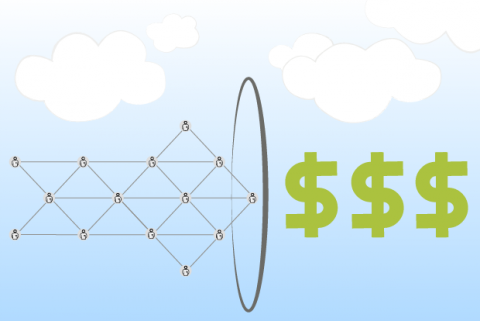There’s a prevailing myth about moving to the cloud: Doing so will automatically save CIOs and their organizations money.
Sure, you could save money by moving certain workloads to a cloud environment. The myth, however, arises with the notion that reduced costs are guaranteed, or, as Cloud Technology Partners VP and principal cloud architect Ed Featherston recently told us, that they’re “magic.”
“I think the biggest myth is that going to the cloud will magically result in cost savings,” Featherston said.
[ Learn the the do's and don’ts of cloud migration: Get the free eBook, Hybrid Cloud for Dummies. ]
We asked several cloud experts to weigh in on some of the common myths and misunderstandings around cloud pricing and costs, all of which tend to overlap or prop up the overarching misunderstanding that “moving to the cloud” is synonymous with “reducing costs.” And, yes, that’s number one on the list.
Myth 1: Cloud is always cheaper
This is the top misunderstanding, and it merits further mention here: Most of the cloud pros we connected with discussed it in some shape or form.
“The major myth is that cloud computing is necessarily less expensive than [on-premises],” says Chuck Brown, CEO of Infinity, Inc. “As with many things, it depends.”
He notes that cost considerations depend upon an organization’s actual goals and requirements. If high resiliency or uptime are your top priorities, for example, it makes financial sense to move to the cloud.
“You can certainly build that yourself, but it’s very expensive,” Brown says. “Cloud does this well.”
Cloud makes sense for many companies, according to Brown, for a wide array of reasons. Many of them, quite simply, aren’t (or shouldn’t be) driven by direct cost reductions.
Myth 2: Cost and value are the same thing
True ROI can be tough to calculate, says Scott Morley, principal architect at OneNeck IT Solutions.
“The cloud infrastructure required for uptime SLAs is so different from on-premises [that] a true apples-to-apples comparison is difficult,” Morley says. IT veterans may be groaning right now – because this problem has been real since the earliest days of cloud computing.
But should you just give up on deciphering your actual costs in the cloud? Hardly.
Rather, Morley thinks most cloud use is better measured by its business value rather than the dollars it costs. Value and cost aren’t one and the same. Value could come in the form of lower costs. It could more likely mean that your cloud strategy is achieving its business goals. (Your cloud strategy is tied to specific business goals, right?)
“It is better to do a cost-benefit analysis to ensure cloud is providing value,” Morley says.
Ned Bellavance, director of cloud solutions at Anexinet, offers a related perspective on how we think about costs. Like our other experts, he concurs that “cloud saves money” is misleading.
Moreover, Bellavance says IT leaders are better served thinking about their cloud spending in relationship to the opportunities it creates. He points to the “goldfish effect” of many cloud migrations.
“You've moved your existing environment from a medium-size fishbowl to a massive, almost limitless tank,” Bellavance explains. “The net effect is that most environments will grow to fit the confines of their new home.”
That growth almost inevitably means increased spending. So it comes back to value: What are you getting for that spending? How is it transforming the business?
“The key here is that your productivity and revenue increase commensurate with your expanded cloud environment,” Bellavance. “While you are not saving money, you are reducing costs in relation to revenue.”
Myth 3: Compute is your only cost
This is a biggie, one that also contributes to "sticker shock" when the cloud bill arrives: Too often we focus only on compute costs: the cost per hour to run a machine, say, which obviously looks a lot different than the cost of buying and maintaining your own servers.
Computing power is almost never your only cost in the cloud, however. To ignore the bigger picture is to fundamentally misunderstand your costs in the cloud. It’s an area where “pricing” and “cost” aren’t necessarily the same thing; “pricing” might be a single service, while “cost” might better describe your actual total spending.
“Cloud computing costs are an aggregate of all the services you are using for your cloud deployment,” Bellavance says. “So while many people just look at the cost of computing, they can forget to factor in all the other ancillary services that make up an application.”
Think storage, networking, monitoring, backups, and more – all of which, Bellavance notes, can come with their own consumption model, and all of which cost money.
“That's the reason your cloud bill is pages long, and why cloud projects seem to run over budget so quickly,” Bellavance says.






